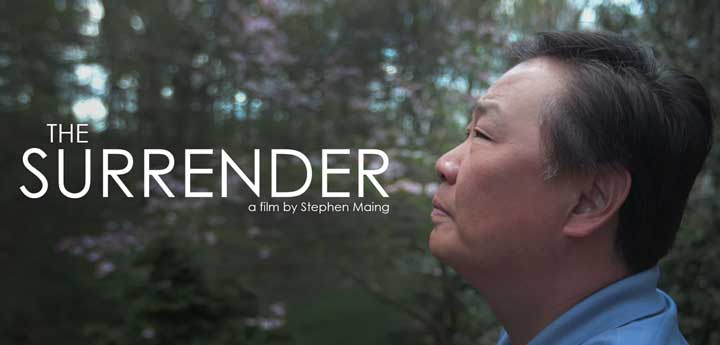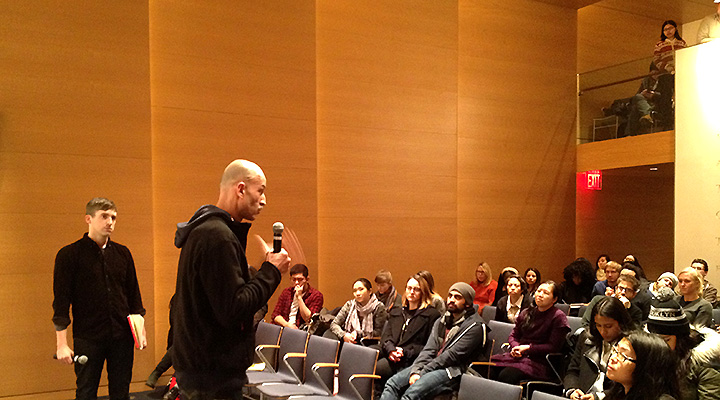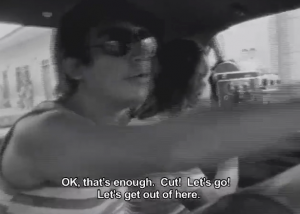Archive for the ‘documentary’ tag
“Kusama – Infinity” Uninspired
Last night, I watched the bio documentary “Kusama – Infinity” that attempts to capture the life and career of visual artist Yayoi Kusama by Heather Lenz. Unfortunately, I came away wondering why I paid to attend a film that did not present anything that I couldn’t have learned from reading her wiki page. The film is conventional, linear and superficial. It begins with Kusama’s childhood as the youngest of four children to wealthy parents who owned a seed company. It points out the clash between Kusama and her mother which perhaps was largely based on Kusama’s obsessive-compulsive disorder that may have not been understood or her mom had little patience for. And her father’s unfaithfulness which her mother had Kusama spy upon (hence the penis soft sculptures). So the film effectively presents a “traumatic” childhood for a sensitive child.
The film documents a letter by Yayoi to Georgia O’Keeffe asking for guidance in becoming a recognized artist that O’Keeffe responded to telling her that she has removed herself from the art world which is in the cities. It continues to poorly attended exhibitions in Matsumoto, Kusama’s hometown while by the sounds of it, Kusama has been disowned by her family. However, at a time when it was expensive to fly from Japan to the United States, Kusama manages to do so. I would have liked to have known how she paid for that flight and from where she gathered the U.S. dollars that she sowed in to her kimono.
“Kusama – Infinity” does an excellent job of capturing Yayoi Kusama’s 1957-1972 period in New York City and the seemingly classic struggle of the self-obsessed artist doing whatever it takes to be shown and recognized. As an artist based in New York City, I have witnessed too many times, the young, actually also not so young artists attending openings merely to try to schmooze with powerful curators, gallerists, collectors. As in all careers, it’s all about the network and getting cozy with the figures that will help one scale the ladder. So it appears that Kusama did this relentlessly, enough so to find a patron to pay for her studio and art supplies and she used her Japanese feminine cuteness/allure to do so.
The film also attempts to paint Kusama as a trail blazer – she was the first to wallpaper a gallery, before Warhol, she was the first to do soft sculptures, before Oldenburg and a mirror room before Samaras. The first two, I don’t really buy. If Warhol was inspired by the wallpaper, great, and the cows are his images. If Oldenburg shifted from paper mache to fabric due to Kusama, smart, and again the content is his. However, Lucas Samaras stealing the mirror concept is pretty outrageous as he had not done anything like that and he basically stole Kusama’s concept and placed it in a high profile gallery. So that I can certainly recognize and even understand a self-obsessed artist dropping herself out a window (she survives due to falling onto a bicycle).
Regarding her naked body happenings, a lot of artists were doing happenings at that time. And Yoko Ono’s “Cut Piece” in 1964 seems much more powerful than any of Kusama’s performances. That said, I would have liked to have learned how she went about organizing them.
The film captures her intervention at the Venice Biennial which is commonplace today, I don’t know if it was so in 1966. The film also presents Kusama’s platonic relationship with Joseph Cornell, her move back to Japan, her re-discovery by the art world in the late 1980s and her rise to current fame. However, the film fails to delve deeply into her psyche, her persona. It does not present anything regarding her siblings and their take on her. The sequences of interview with Kusama present little depth. Perhaps there isn’t much more than obsessive compulsive disorder fulfilled by painting dots and a relentless desire for fame. Unfortunately the film is boring, but short enough that it doesn’t get tedious.
Support Nathan Fitch’s “Island Soldier”
Nathan Fitch is an extraordinary photographer and film maker and the pieces that I’ve seen of his documentary “Island Soldier” are emotionally striking and enlightening. This is a project well worth supporting via Kickstarter “Island Soldier”.
“The Surrender” by Stephen Maing
“The Surrender” by Stephen Maing
Occasionally, I see something that makes me reconsider the Libertarian platform as perhaps not being so ridiculous. The latest something to do so is the short documentary by Stephen Maing titled “The Surrender” which is currently available on First Look Media.
A simple conversation between Stephen Kim an intelligence analyst in the State Department and an ignorant Fox reporter James Rosen lead to the prosecution and 13 month prison sentence of Stephen Kim. The basis of this prosecution is a report that a UN Resolution would lead to further nuclear tests by North Korea. As Jon Stewart put it “that’s it, that’s the leak… North Korea has a nuclear test based economy.”
A good man looses his life savings fighting ridiculous accusations by the Obama administration using the Espionage Act to try and dig up whistle blowers. It’s difficult to not consider whistle blowers as the agents for a transparent government, one of the values espoused by Obama.
Why are our tax dollars going toward the conviction of innocent people who are trying to help build a better world? Of course Libertarian ideals and the desire to contribute toward a better government and country are at odds. Immediately after reconsidering Libertarianism, I recall… “oh ya, Libertarians must be land-owning white people who are pissed about taxes, like to have their guns and feel strongly that they had nothing to do with slavery or its aftermath. They probably home school their children and are against vaccinations.”
Once Stephen Kim’s prison term is up, he must show proof of employment. Later this year Stephen Kim will go from highly regarded State Department Analyst to a Beauty Product Salesman (Kim secured his employment at a beauty supply store before heading to jail).
Charif Kiwan of Abounaddara collective at Hunter College

Charif Kiwan of Abounaddara collective at Hunter’s Roosevelt House in discussion with Jason Fox and Hunter students, 19 February, 2015
Hunter College Media Studies professor, Jason Fox invited Charif Kiwan of the Abounaddara Syrian video collective to screen a compilation film and speak with Hunter Students. The evening made for a powerful and eye-opening exchange.
Inspired by Dziga Vertov’s “Man with a Movie Camera” (1929), Abounaddara is Arabic for “man with glasses.” Charif Kiwan is the collective’s representative who no longer lives in Syria and has no plans to return. Osama al-Habali, one member of the collective has been imprisoned for the past year and a half, however the collective continues with its mission to produce and post one video a week depicting Syrian life at a time of war.
As Charif described the work of Abounaddara, the collective’s goals are simple:
1. Produce and post one video per week that captures Syrian life at this time of war. Kiwan referred to this practice as “emergency cinema.”
2. Defend the “right to the image” as a basic human right.
The outcome of these goals are to inform and motivate others to find a way to help a people in crisis and to create an archive that portrays every-day life in Syria at this moment. The French-German television network arte commissioned the nearly hour-long compilation of Abounaddara’s videos that was screened at the Roosevelt House.
Although Charif claimed that the anonymous video collective attempts to capture all sides of Syrian life and in doing so give voice to members within the Bashar al-Assad regime and the Islamic State as well as to the rebels and the victims of the ongoing conflict, the compilation is most strongly a call to end the violence and suffering.
Amongst the most powerful shorts in the compilation are “Children of Halfaya” and “SYRIA: Snapshots of History in the making” both are embedded below. “Children of Halfaya” captures boys in a refugee camp in Lebanon, the oldest boy recalls bombing massacres, including that of his school. And “SYRIA: Snapshots of History in the making” captures a young man retelling the moment that he became an activist and the empowerment of protest, however, he must pause as his interview is interrupted by bombing.
Children of Halfaya from abou naddara on Vimeo.
Syria : Snapshots of History in the making from abou naddara on Vimeo.
Whereas other videos posted to Vimeo, merely capture moments in everyday life, such as young people enjoying a street concert (this video was not included in the compilation):
The Wall from abou naddara on Vimeo.
Charif Kiwan pleaded to the audience to act, to engage and to work toward a better world. The video compilation captured diverse perspectives, however, the message appeared clear – the United States must intervene in Syria. It is the moral imperative to end the killing. Charif stated that Syrians are strongly against imperialism, and he seemed to imply an understanding of the price that a U.S. intervention would cost Syria and it’s culture. The current reality of human massacre, suffering and exodus necessitates intervention by foreign powers.
Agarrando Pueblo (aka The Vampires of Poverty)
I recently re-visited this very important mockumentary from 1978 and need to make a note of it. “Agarrando Pueblo (aka The Vampires of Poverty)” was shot in Cali, Colombia, 1978 and is a satiric mockumentary critiquing the popularity of documentaries capturing Latin American poverty in the 1970s. Mayolo and Ospina coined the term “pornomiseria” or “pornography of misery” in reference to the objectification of poverty in Latin America for Eurocentric audiences.
The director and cameraman move quickly around the city requesting a taxi driver to take them to spots where they can capture poor children, crazy people and whores. The directors have a recipe of necessary vignettes to compose the documentary. When pedestrians confront the film makers they dismissively tell them that it’s to inform the world or that they don’t understand what this film is about. At one point the director is filmed some cocaine in his hotel bathroom between shots.
Support Freegan Film via Kickstarter
One of the grads, Alex Mallis, in Hunter’s Integrated Media Arts (IMA) program is seeking funding for a film capturing a group of people who feed off discarded food. Support the film via it’s Kickstarter campaign.
“An aging artist, his young assistant, and blind friend arrive by rusted retro car; a Puerto Rican woman and her teenage grandson embark on foot, lead by a rattling grocery cart; a hyperactive twenty-something and his stoned companion leave a Bushwick loft to navigate the subway. Familiar faces and converging philosophies meet to take what others deem unworthy of consumption. The reward of a free and delicious discovery activates a ritual adventure – a night of extraordinary harvest.”
– Alex Mallis, Excerpt from film description on Kickstarter
